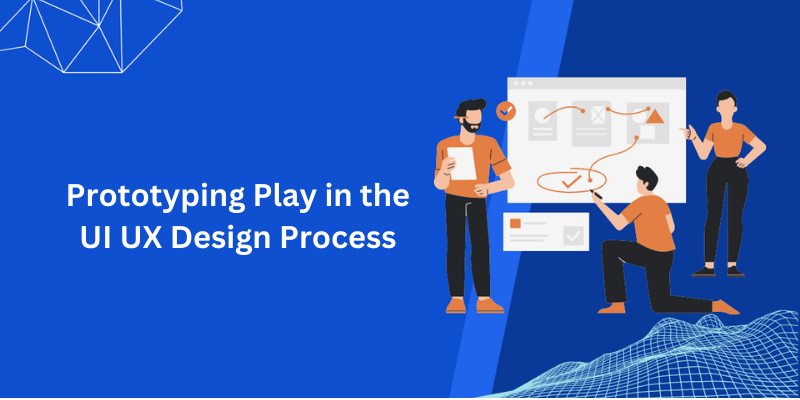UI/UX design focuses on creating user-friendly interfaces and improving user experiences by combining visual design with functionality. It ensures that digital products are both aesthetically pleasing and easy to use. Prototyping is crucial in the UI/UX design process, bridging the gap between initial concepts and final products. It allows designers to test, refine, and validate ideas before development, ensuring a more user-centered and practical design. Join the UI UX Design Course in Gurgaon, which offers certification training and job placement support.
The Importance of Prototyping in UI UX Design
Prototyping is a critical phase in the UI/UX design process, offering invaluable benefits in translating ideas into tangible solutions. It allows designers to visualize their concepts and test functionality early in the design cycle. By creating a prototype, designers can explore different design directions and refine their ideas based on user feedback and technical considerations. This iterative approach guarantees that the final product closely matches user needs and expectations.
User Testing with Prototypes
User testing is a key component of the prototyping phase. It involves observing real users as they interact with the prototype to identify areas for improvement. This testing can reveal insights into how users navigate the interface, where they encounter difficulties, and what features they find valuable. By incorporating user feedback, designers can make data-driven decisions to enhance the user experience and address any issues before the final design is implemented. Explore UI UX Design Course in Kolkata to gain a better understanding of UI/UX features.
Iterative Design Process
Prototyping supports an iterative design process, allowing designers to refine their ideas through multiple cycles of testing and feedback. Each iteration provides an opportunity to address issues and incorporate improvements based on user insights and technical constraints. This iterative approach helps in developing a more polished and user-friendly final product. It also fosters a culture of continuous improvement, where design decisions are continuously evaluated and optimized.
Collaboration and Communication
Prototypes play a crucial role in fostering collaboration and communication among team members. They provide a concrete representation of design ideas, making it easier for designers, developers, and stakeholders to understand and discuss the proposed solutions. This clarity helps in aligning everyone’s expectations and ensuring that the design vision is accurately translated into the final product. Prototypes also serve as a reference point throughout the project, helping to maintain consistency and coherence.
Prototyping Tools and Techniques
A variety of tools and techniques are available for creating prototypes, each suited to different stages of the design process. Tools like Sketch, Figma, and Adobe XD offer powerful features for designing and testing prototypes, enabling designers to create interactive and high-fidelity representations of their ideas. Techniques such as rapid prototyping and paper prototyping provide quick and cost-effective ways to explore design concepts and gather feedback. Choosing the right tools and techniques depends on the project’s goals, timeline, and resources. Enrol in UI UX Design Course in Delhi helps designers gain a deep understanding of prototyping within the UI/UX design process.
Challenges in Prototyping
Despite its advantages, prototyping comes with challenges. Creating detailed and interactive prototypes can be time-consuming and resource-intensive, particularly for complex designs. It is essential to balance the level of fidelity with the project’s needs and constraints. Additionally, managing feedback from various stakeholders can be challenging, as it may require navigating differing opinions and expectations. Addressing these challenges requires careful planning and effective project management to ensure that the prototyping phase adds value to the design process.
Types of Prototypes in UI UX Design
- Low-Fidelity Prototypes: Low-fidelity prototypes include sketches and wireframes that focus on layout and fundamental functionality. These prototypes are easy to create and are particularly useful during the initial brainstorming stages. They provide a basic framework for early feedback and concept validation.
- Mid-Fidelity Prototypes: Mid-fidelity prototypes build on the low-fidelity versions by incorporating more details and basic interactions. They are useful for evaluating usability and the flow of the design. These prototypes help in refining user interactions and understanding how the design functions in a more developed state.
- High-Fidelity Prototypes: High-fidelity prototypes are detailed and closely resemble the final product. They include intricate design elements and realistic interactions. These prototypes are essential for final testing, allowing for a thorough evaluation before the design moves into development.
Benefits of Prototyping in UI UX Design
- Early Detection of Issues: Prototyping helps identify design flaws and usability issues early in the process. By addressing these problems early on, designers can avoid expensive changes and corrections during later stages of development.
- Valuable Feedback: Interacting with a prototype allows stakeholders and users to provide meaningful feedback. This input is crucial for refining the design, ensuring it aligns with user needs and expectations.
- Improved Communication: Prototypes enhance communication among team members. They serve as a concrete representation of design ideas, making it easier to share, discuss, and make informed decisions about the project.
Prototyping is crucial in UI/UX design, offering key advantages in visualization, testing, and refinement. Through iterative prototyping, designers create more user-focused and effective solutions that meet user needs. Despite some challenges, prototyping is vital for enhancing collaboration, communication, and continuous improvement in delivering successful UI/UX designs. Enrolling in the UI UX Designer Course in Pondicherry could significantly boost your career.
Also Check: UI UX Designer Interview Questions and Answers
